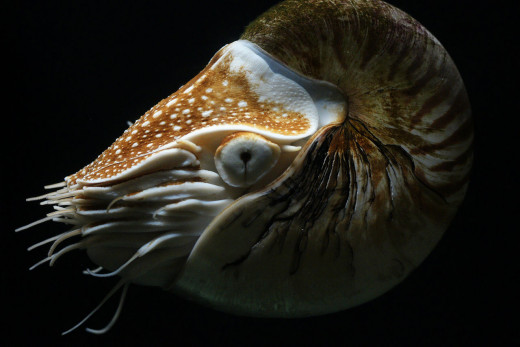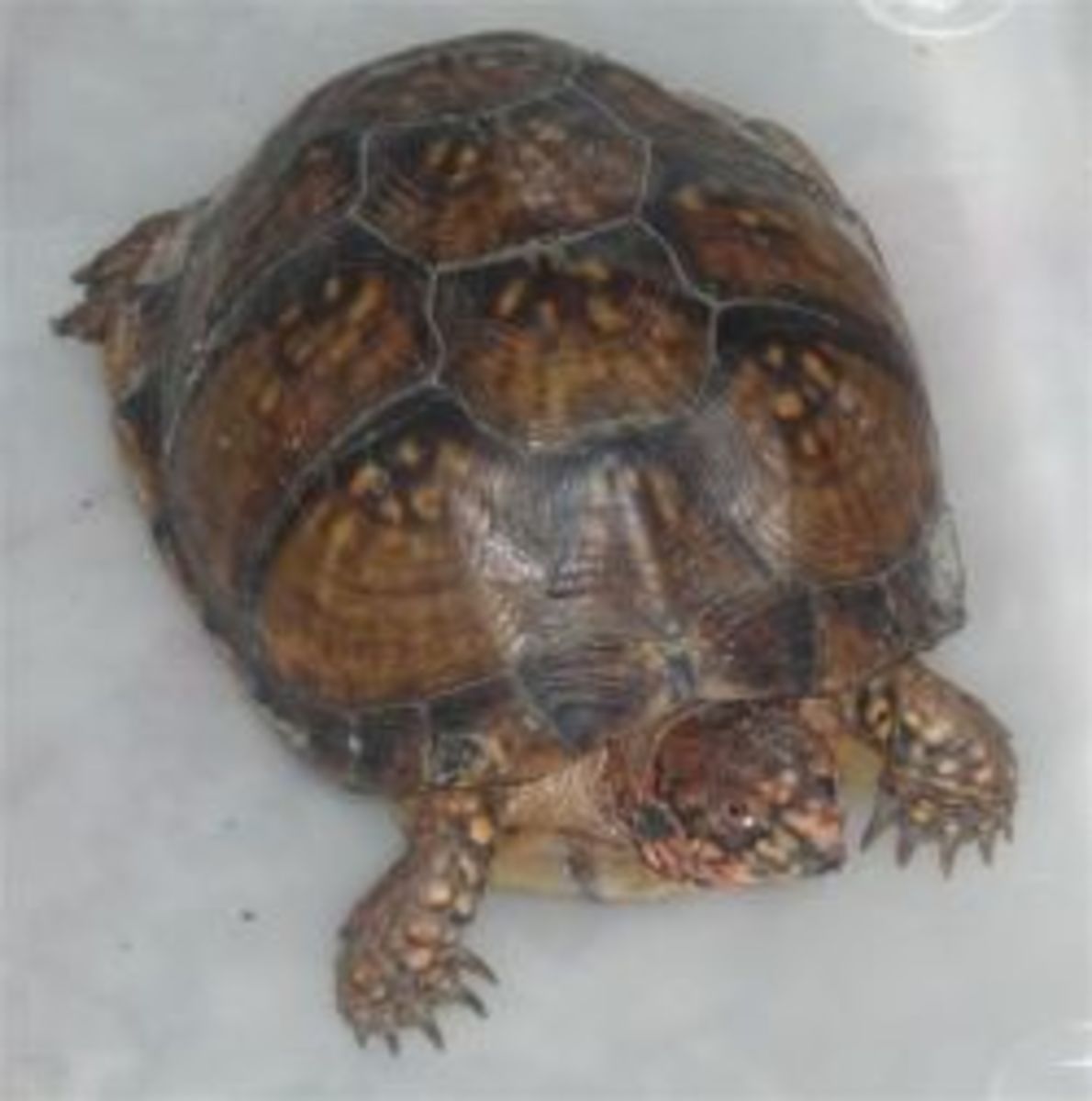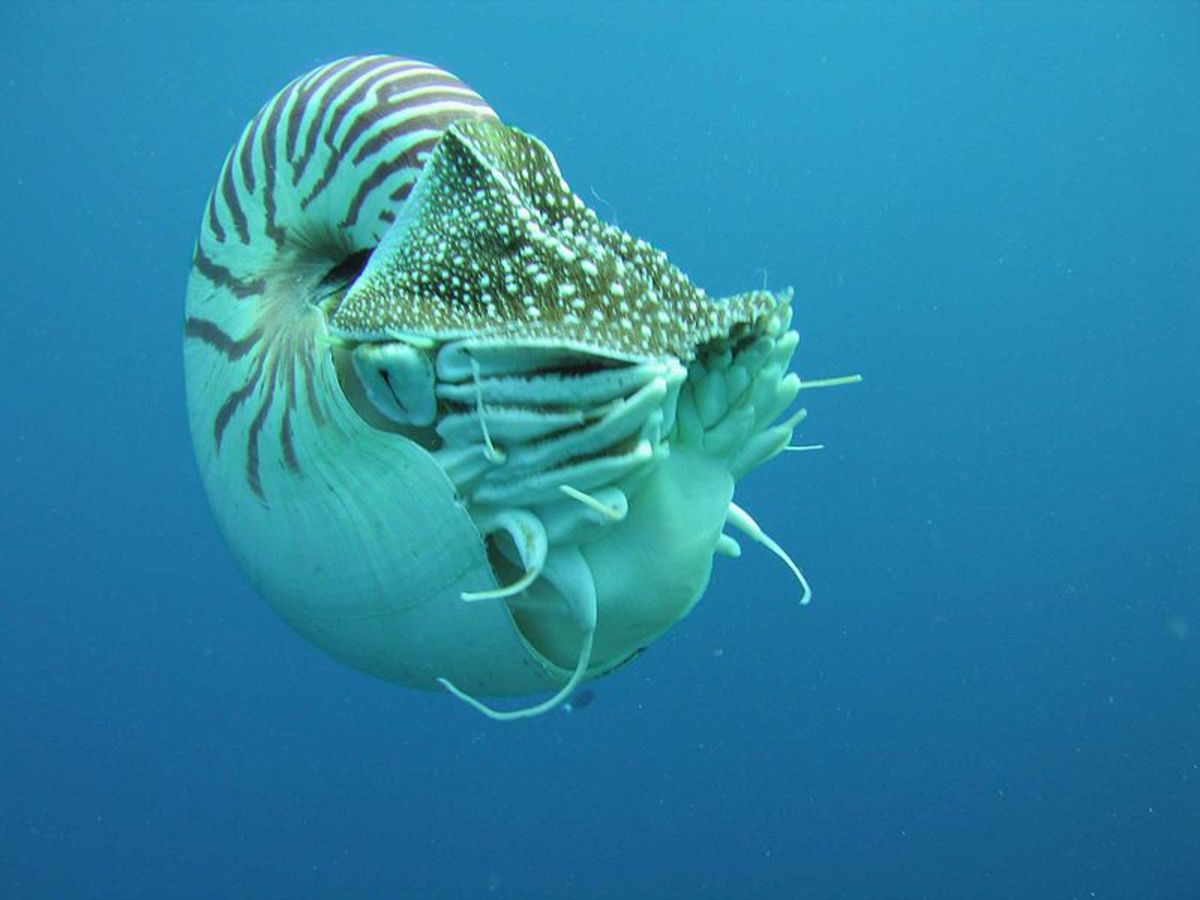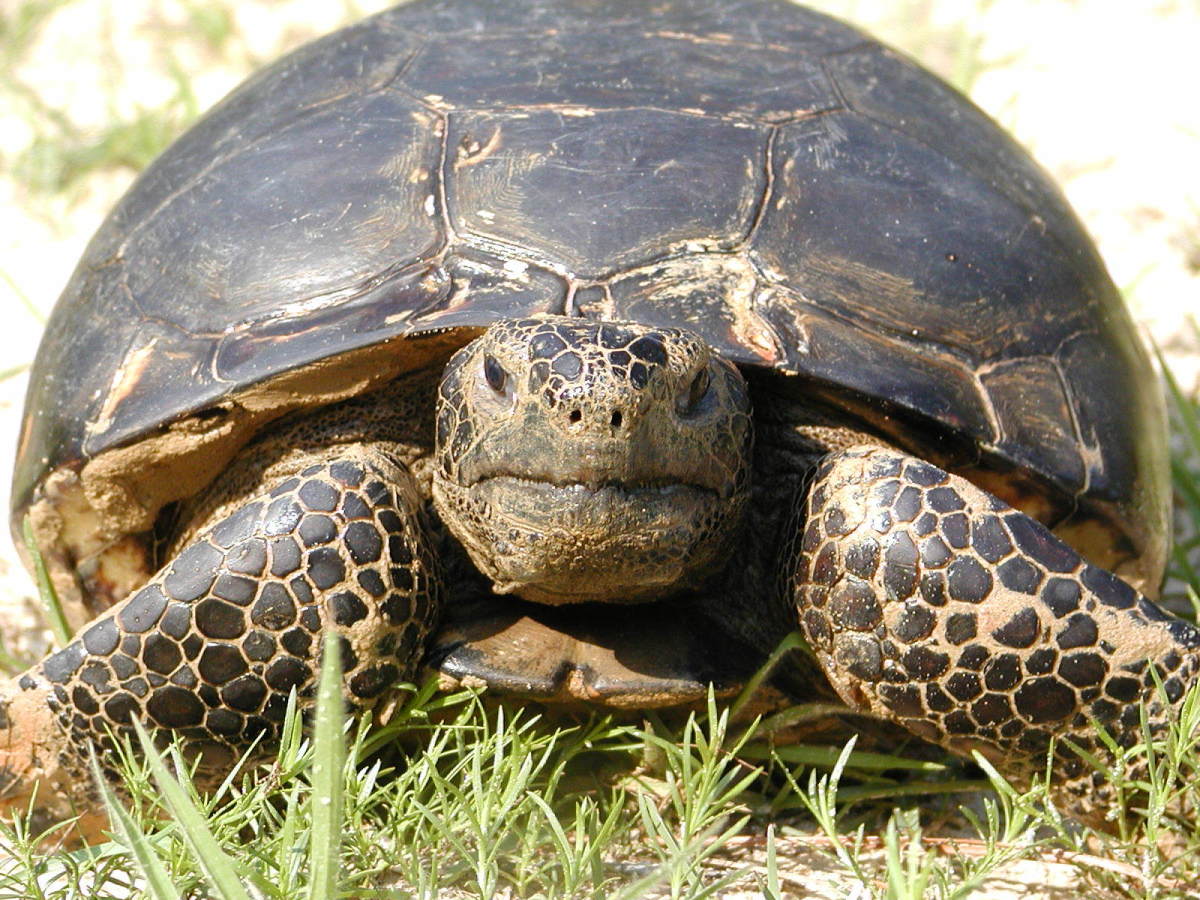Chambered Nautilus, a living fossil
Chambered Nautilus
The strange animal you see on the image below is commonly known as the Chambered Nautilus. Scientifically described as Nautilus pompilius, the chambered nautilus is the most studied, large and widespread species of nautilus.
It is a cephalopod of the family Nautilidae and a distant "cousin" of octopuses, snails, squids and clams. N. pompilius is considered by researchers to be a living fossil, as it has remained virtually unchanged, for the past 500 million years.
The chambered nautilus lives in tropical waters, from the Andaman Sea east to Fiji and from southern Japan to the Great Barrier Reef. Its habitat usually lies in seas where the coral reef slopes go down into deep waters. The animal usually resides in depths ranging from 270 ti 600 meters (900 to 2000 feet.)
Here's a picture of this truly magnificent creature:
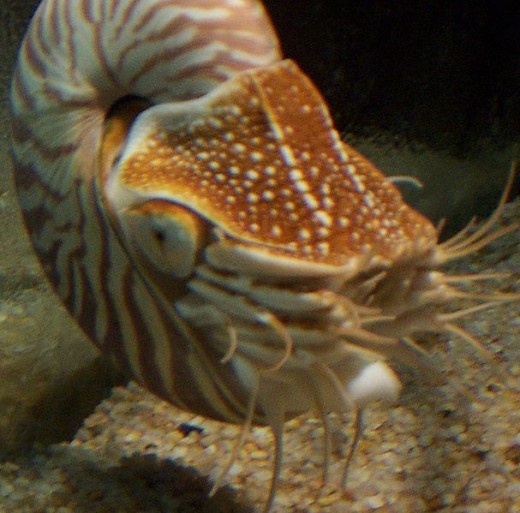
Description
Individuals usually reach a length of about 20 cm (8 inches). The chambered nautilus has a smooth and white shell that bears brownish stripes and is the only cephalopod that has a fully developed shell for protection.
For movement, it uses jet propulsion, reaching speeds of about two knots. Located near the tentacles, there is a small tube-like organ called siphon. The siphon expels water under pressure propelling the nautilus in the opposite direction at the speeds I mentioned before.
Nautilus pompilius has very poor eyesight and the eyes have no lenses. You can see a close up in the picture right below.
Their shell is made off many individual chambers. Each and every chamber is individually sealed and contains a non-fixed amount of gas. This feature provides the animal with buoyancy. Density is regulated by injecting or removing fluid into the chambers, through a system of tubes. The hard shell is also used as a means of protection against predators.
The chambered nautilus has more than 90 tentacles that have no suction cups. They are used for catching shrimp, fish and small crustaceans. They are active predators, however their siphon system is very energy-efficient and they only need to eat once a month
The average life span of the species is believed to exceed 15 years of age, which is remarkably long for cephalopods.

Diet & Predators
They are scavengers, mainly feeding on dead crabs, fish and shrimp, and even the exoskeletons of molting crustaceans. Newborn nautiluses are known to eat small shrimps and other small prey.
As for enemies, some recorded predators include:
- Turtles
- Octopuses
- Triggerfish
- Sharks
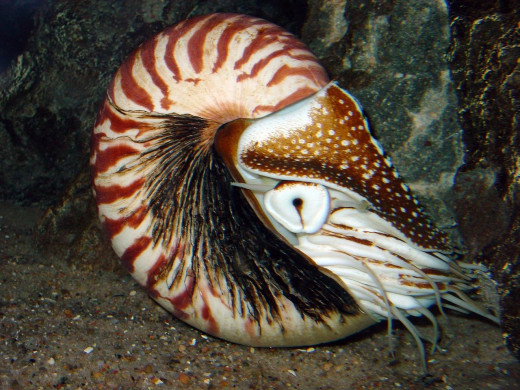
Behavior
During the morning, the species prefers to stay in dark and cool waters at depths ranging from 900 to 2,000 feet (275 to 610 metres) to avoid predators. At night, they may ascend to sallower waters, at depths ranging from 300 to 500 feet (90 to 150 metres) to find food.
These beautiful creatures reproduce once every year. The spadix (the male sexual organ) passes the sperm to the female during mating. The mating procedure may last up to 24 hours!
Females then deposit the fertilized eggs one by one throughout the whole year. It can take 9 to twelve months for the eggs to hatch. As the hatchlinkgs get bigger and bigger, new chambers are added to their shell.
Chambered Nautilus Subspecies
Scientists have described two different subspecies. The first one is Nautilus pompilius pompilius and the other is Nautilus pompilius suluensis
N. p. pompilius is commonly known as “Emperor Nautilus” due to its large physique. It is the largest and most common between the two. The subspecies occurs in the Andaman Sea east to Fiji and southern Japan south to the Great Barrier Reef. Remarkably large specimens of this subspecies -with a shell diameter of up to 268 mm (10 inches)- have been found in Indonesia and northern Australia.
N. p. suluensis has a way smaller physique and can only be found in the Sulu Sea in the southwestern Philippines. The largest specimen ever recorded had a shell diameter of 148 mm (5,5 inches). The Sulensis name derives from name of the sea it leaves in.
Here's video featuring a Chambered Nautilus. Be amazed by its beauty:
Conservation Status
The conservation status of the chambered nautilus is still under assessment by the IUCN. The little available data indicate that although not under immediate threat, most populations have a declining trend.
The main threat is shell trade. Unfortunately the species is only protected in Indonesia, which banned collection in 1987. Let's hope other countries take measures as well, before its too late.
More Strange Animals
Did you enjoyed reading about the chambered nautilus? If yes, I highly suggest you to check my strange and weird sea animals hub, featuring all kinds of weird and bizarre sea animals. And if you still want more, you may want to check this lengthy a to z strange animal list.
Don't forget to rate, comment and subscribe. Cheers !
